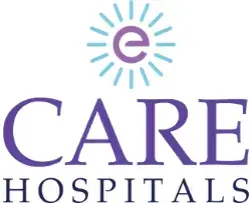Robot-Assisted Adenomyomectomy Surgery
Robotic Adenomyomectomy brings fresh hope to women who suffer from adenomyosis. Robotic adenomyomectomy has emerged as a promising technique that addresses this challenge. This procedure spares fertility by removing adenomyotic tissue and keeping the healthy uterus intact.
This article provides essential information about this innovative procedure to women who battle adenomyosis while wanting to keep their fertility options open. Patients can learn about preparation, recovery, risks, and benefits to make informed choices about their afya ya uzazi.
Why CARE Group Hospitals is Your Top Choice for Robotic Adenomyomectomy Surgery in Hyderabad
Hospitali za CARE inaongoza njia ya kuingia upasuaji wa roboti in Hyderabad with its strong infrastructure built for advanced procedures like robotic adenomyomectomy.
CARE Hospitals has highly trained specialists who excel at robotic surgeries. The hospital takes a comprehensive approach that works well, especially when you have complex medical needs. Their dedicated operation theatre complex has new modifications for robotic surgeries, backed by 24/7 imaging, laboratory and blood bank services.
Ubunifu wa Maendeleo ya Upasuaji katika Hospitali ya CARE
CARE has raised its specialty services by bringing in the Hugo and Da Vinci X robotic systems. These innovative systems give surgeons high-definition 3D views during complex procedures. The specialised robotic arms move with exceptional flexibility, which makes precise access to difficult anatomical areas possible with minimal tissue damage.
Indications for Robotic Adenomyomectomy Surgery
Doctors suggested robotic adenomyomectomy to address:
- Ongoing or intense maumivu ya pelvic that lowers quality of life
- Symptoms that fail to improve with medication
- Adenomyosis-related fertility problems
- Kutokwa na damu nyingi kwa hedhi
- Mara kwa mara mimba
Types of Robotic Adenomyomectomy Procedures
CARE Hospitals' surgeons use precise techniques for adenomyomectomy. The 'cold-cut' method with minimal electrocauterisation keeps healthy surrounding tissue safe. Robot-assisted laparoscopic adenomyomectomy matches open surgery's precision but leads to less blood loss. Patients also enjoy shorter hospital stays and recover faster.
Maandalizi ya kabla ya upasuaji
Successful robotic adenomyomectomy surgery needs careful planning. Patients must follow their surgeon's fasting guidelines before the procedure.
Your doctor will tell you when to stop eating and drinking. The healthcare team needs to know about all your medications, supplements, and over-the-counter remedies to adjust them properly.
Robotic Adenomyomectomy Procedure
Hatua ni pamoja na:
- The surgery starts after giving general anesthesia.
- The surgeon makes small incisions for the laparoscope and surgical instruments.
- The surgeon makes a vertical or horizontal cut on the adenomyotic lesion.
- The surgeon removes affected tissue carefully to protect healthy uterine structures.
- The final step involves repairing the myometrium layer by layer.
- The surgeon removes surgical instruments and the laparoscope and sutures the incisions.
Kawaida upasuaji huchukua masaa 2-3.
Kupona baada ya upasuaji
Each patient's recovery journey differs based on their procedure. Hospital stays usually last 1-5 days. Complete recovery at home takes 2-4 weeks. You might experience some vaginal bleeding and mild discomfort at first. Your doctor will help you slowly increase physical activity instead of jumping back into your routine.
Hatari na Matatizo
Studies reveal that less invasive methods tend to result in fewer problems. These include:
- Maambukizi
- Kutokana na damu nyingi
- Damage to the nearby organs
- Reaction to the anaesthesia
- Adenomyosis might come back
Benefits of Robotic Adenomyomectomy Surgery
This surgery can reduce pain, decrease menstrual bleeding, improve fertility chances, and save the uterus. Many patients report much lower pain levels after surgery.
Insurance Assistance for Robotic Adenomyomectomy Surgery
IRDAI guidelines from 2019 require all health insurance companies to cover robotic surgeries. The policy generally covers hospital stays, surgery costs, doctor's fees and nursing charges, but some might have certain limits. The coverage includes pre-hospitalisation and post-hospitalisation costs.
Second Opinion for Robotic Adenomyomectomy Surgery
Adenomyosis treatment can be complex. Multiple specialist consultations will help you make the right choice. Getting another opinion helps confirm your diagnosis and lets you explore other treatment options. Patients should seek second opinions to ensure robotic adenomyomectomy matches their specific needs and goals.
Hitimisho
Robotic Adenomyomectomy offers significant relief to women by reducing their pain levels. Patients heal quicker than they do with older methods and resume their daily activities in about a month. Surgeons use the precision of robotic technology to take out problematic tissue but keep the healthy areas intact, which is not possible with traditional hysterectomy.
CARE Hospitals now offers this revolutionary treatment in Hyderabad through their specialised facilities and expert surgical teams. Their Hugo and Da Vinci X systems provide exceptional precision during these complex procedures.
Medical science keeps moving forward, and this breakthrough changes lives every day. Women who once heard hysterectomy was their sole option now have a promising path that protects both their health and dreams of having children.
 HyderabadHospitali za CARE, Banjara Hills CARE Kituo cha Wagonjwa wa Nje, Banjara Hills Hospitali za CARE, Jiji la HITEC Hospitali za CARE, Nampally Hospitali ya Gurunanak CARE, Musheerabad CARE Hospitals Outpatient Centre, HITEC City Hospitali za CARE, Malakpet
HyderabadHospitali za CARE, Banjara Hills CARE Kituo cha Wagonjwa wa Nje, Banjara Hills Hospitali za CARE, Jiji la HITEC Hospitali za CARE, Nampally Hospitali ya Gurunanak CARE, Musheerabad CARE Hospitals Outpatient Centre, HITEC City Hospitali za CARE, Malakpet Raipur
Raipur
 Bhubaneswar
Bhubaneswar Visakhapatnam
Visakhapatnam
 Nagpur
Nagpur
 Indore
Indore
 Ch. Sambhajinagar
Ch. SambhajinagarKliniki na Vituo vya Matibabu



